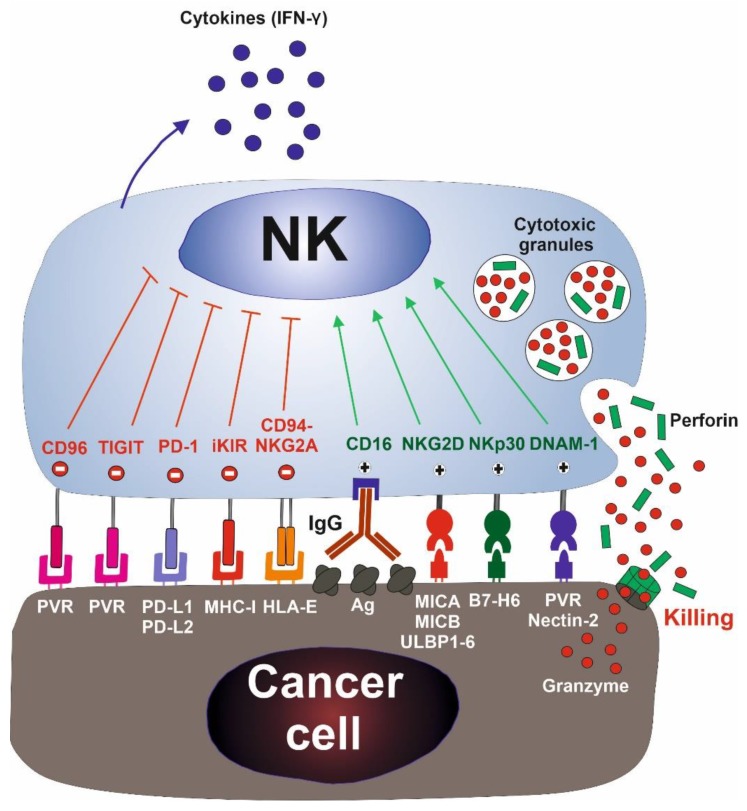Figure 1.
Natural killer (NK) cell activation: The activation of NK cells is mediated by a balance of signals provided by a network of activating and inhibitory receptors. Inhibitory receptors (depicted in red) recognize surface self-proteins normally expressed by all healthy nucleated cells. The loss of their expression, frequently caused by viral infection or cellular transformation, leads to NK cell activation (“missing self” recognition). Activating receptors (depicted in green) recognize ligands that are induced on virus-infected and malignant cells. Activated NK cells induce the apoptosis of tumor cells by the exocytosis of cytotoxic granules containing perforin and granzymes, and secrete cytokines, such as IFN-γ. Major inhibitory and activating receptors on NK cells and their cognate ligands on targets are depicted. IFN-γ, interferon-γ; TIGIT, T cell Ig and ITIM domain; PD-1, programmed death-1; iKIR, inhibitory killer cell immunoglobulin-like receptor; NKG2A, natural killer group 2A; NKG2D, natural killer group 2D; NKp30, natural killer P30; DNAM-1, DNAX accessory molecule 1; PVR, polivirus receptor; PD-L1 and 2, programmed death-ligand 1 and 2; MHC-I, MHC class I; HLA-E, human leucocyte antigen E; Ag, antigen; MICA, MHC class I polypeptide-related sequence A; MICB, MHC class I polypeptide-related sequence B; ULBP1-6, UL16 binding proteins 1–6.

